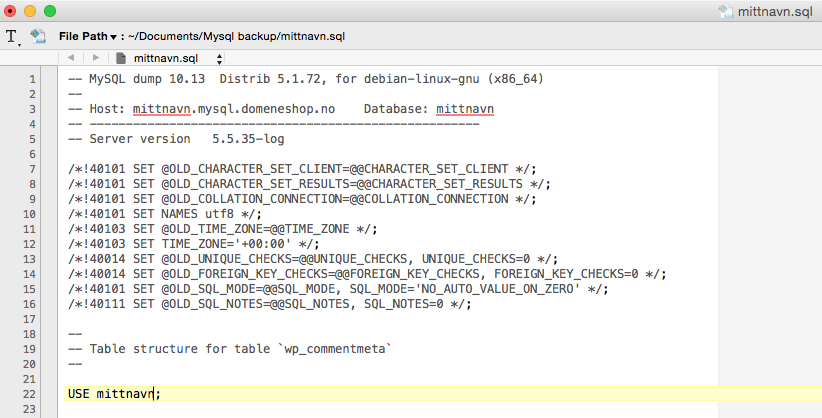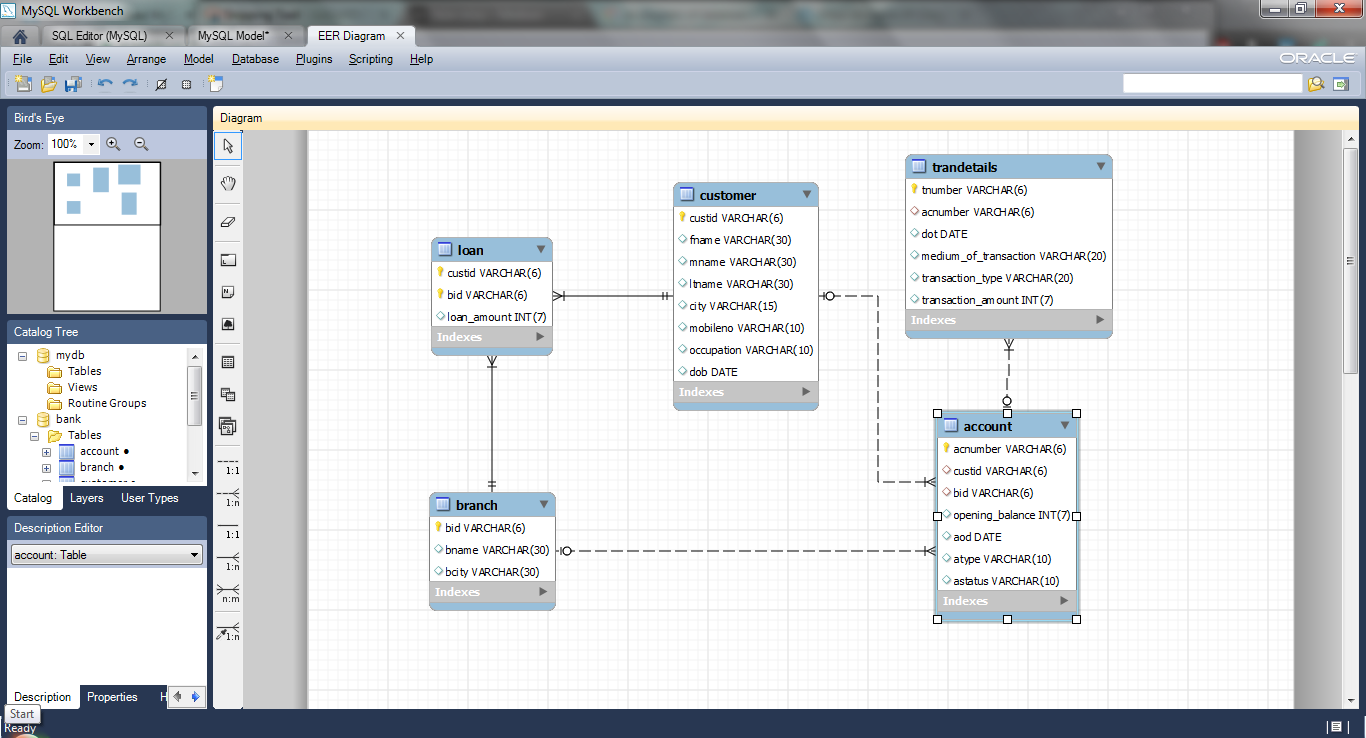

Use the CREATE DATABASE statement to create a new database.Now, you can work with testdb2 from the MySQL Workbench. The testdb2 node is open as shown in the following screenshot. Seventh, to select the testdb2 database, (1) right-click the database name and (2) choose Set as Default Schema menu item: If everything is fine, you will see the new database created and showed in the schemas tab of the Navigator section. Note that the CREATE SCHEMA statement command has the same effect as the CREATE DATABASE statement. The following is the screenshot that displays the Connect to Database dialog box. Sixth, MySQL Workbench opens the following window that displays the SQL script which will be executed. To create a new database with MySQL Workbench, you need to launch MySQL workbench. You need to (1) enter the schema name, (2) change the character set and collation if necessary, and click the Apply button: Creating a new schema also means creating a new database.įifth, the following window is open. In MySQL, the schema is the synonym for the database. MySQL Workbench opens the following window which consists of four parts: Navigator, Query, Information, and Output.įourth, click the create a new schema in the connected server button from the toolbar: Third, double-click the connection name Local to connect to the MySQL Server.
#CREATE DATABASE MYSQL WORKBENCH PASSWORD#
You need to (1) type the password for the root user, (2) check the Save password in vault, and (3) click OK button. MySQL Workbench displays a dialog asking for the password of the root user: Second, type the name for the connection and click the Test Connection button. To create a new database using the MySQL Workbench, you follow these steps: First, launch the MySQL Workbench and click the setup new connection button as shown in the following screenshot: Second, type the name for the connection and click the Test Connection button. To create a new database using the MySQL Workbench, you follow these steps:įirst, launch the MySQL Workbench and click the setup new connection button as shown in the following screenshot: The primary key and foreign key fields have been highlighted.Bye Creating a new database using MySQL Workbench You can rearrange the tables by clicking on the tables and dragging them to provide a more readable layout: Diagram of a relationship between three tables. Create a Database using MySQL Workbench Click the icon for creating a new schema (youll find this on the Workbench toolbar): Enter the schema name (in this. Just click and drag them to a more suitable position, and you’ll find the relationship links will follow (and remain intact). The diagram will be created: When MySQL Workbench generates your diagram, you might find all your tables piled on top of each other. Generate the DiagramĬreate a diagram by clicking Model > Create Diagram from Catalog Objects: The “Create Diagram from Catalog Objects” in MySQL Workbench allows you to turn your model into a visual diagram. Create Relationships, etcĬreate relationships and any other configurations by using the various tabs: The “Foreign Keys” tab enables you to set up relationships between tables. Also specify whether it’s a primary key column, allows null values, auto-increment value, and more. After adding a table, create each column and set its data type. Add Tables, ColumnsĪdd tables by clicking Add Tables, then add/configure their columns in the bottom pane: Configuring a table when creating a model using MySQL Workbench. You can then add tables, columns, views, routines, and more. Create a New SchemaĬreate a new schema by clicking the + icon next to Physical Schemas: Clicking the “+” sign next to “Physical Schemas” adds a new schema. Create a New ModelĬlick File > New Model from the menu: Selecting “New Model” from the File menu will enable you to create a new database model and/or diagram. In Setup New Connection dialog box, enter the following information on the Parameters tab: Setting. You can rearrange the tables to a more suitable layout by clicking and dragging.īelow are screenshots for the above steps. To connect to Azure MySQL Server by using the GUI tool MySQL Workbench: Launch the MySQL Workbench application on your computer.

Create a new schema by clicking the + icon next to Physical Schemas.

To create a new database diagram using MySQL Workbench:


 0 kommentar(er)
0 kommentar(er)
